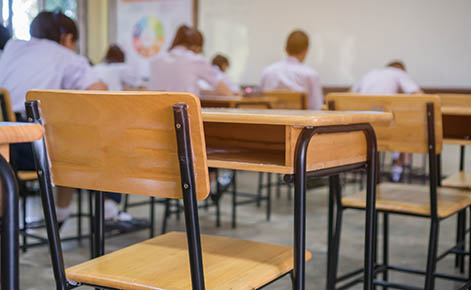The first independent report on Michigan’s Partnership Model for school reform finds “modest but potentially positive results” after one year of implementation. The report, from Michigan State University’s Education Policy Innovation Collaborative, EPIC, provides an overview of the reform’s implementation across the state and an analysis of students’ academic performance.

Overall researchers found that the model had a positive effect on student success. And the stakes are high since more than 54,000 students are in these schools.
“There is no one cure-all solution to the problem of persistently struggling districts and schools,” said Katharine Strunk, co-director of EPIC and professor of education policy at MSU. “But what is clear is that the partnership model has had a greater positive effect than other interventions such as closing schools.”
Specifically, of the 33 Partnership districts, the most notable improvements in student test scores, teacher retention and drop-out rates occurred in the Detroit Public Schools Community District.
To assess the model, EPIC researchers used 10 sources of data including student and teacher records, surveys and interviews with teachers and principals, and district level finance data.
“Educator perspectives are central to understanding reform implementation and outcomes,” Strunk said. “How teachers and principals perceive the effectiveness of their own school surroundings is an important indicator of how well schools are functioning. Teachers and principals are the ‘first responders’ in educational improvement. How educators perceive reform to occur – how affected their work is in the first place – is a measure of the reform implementation itself.”
The researchers also identified two large challenges faced by the schools – teacher retention and recruitment, especially in urban settings. Year after year, turnover of teachers in Partnership schools remains high – a fact noted by most district superintendents interviewed for the report. One-third of the superintendents interviewed resort to substitute teachers to serve as full-time teachers.
This shortage makes districts’ efforts to turn around their schools even more challenging. Superintendents consistently said that high turnover impacts long-term plans and complicates reform because they have to rebuild and reinvest in new teachers.
Though the report is encouraging, Strunk said many of the obstacles faced by Partnership districts are beyond their control or the Michigan Department of Education’s control.
“State policymakers should recognize that even a fully implemented Partnership model is unlikely to be the remedy for fundamental issues facing Michigan’s struggling schools,” Strunk said. “Poverty and struggling schools did not occur overnight or as a result of a single failed policy or program. These are old problems that have persisted for decades, which implies we need new solutions.”
The full report can be found here.
This story, written by Kim Ward, was originally posted on MSU Today.
This work, and those of others from Michigan’s University Research Corridor (URC), are highlighted in a K-12 Education Brief, posted online on Oct. 15. The brief shares how three research universities—MSU, University of Michigan and Wayne State University—are helping to “transform education in the state by providing research, innovative solutions for student learning and nationally recognized teacher education programs.”




